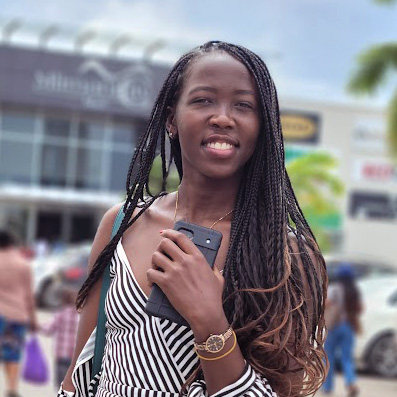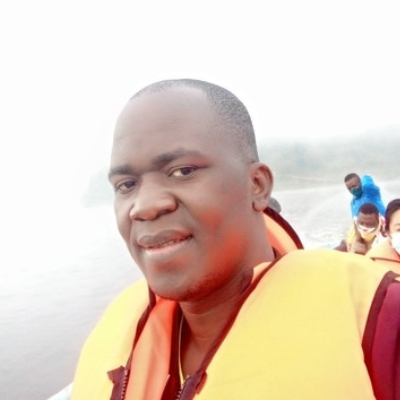There’s a moment in the savannah that doesn’t show up on maps or itineraries. It’s not the lion sighting. Not the elephant bull in the distance. It’s something else.
It happens when everything goes quiet.
You’re sitting still in an open vehicle, the horizon stretching so wide it feels like the edge of the world. The grass sways, the wind hums low, and a giraffe turns its head to look at you like you’ve interrupted a very old, very personal thought. There’s no sound but breath—yours and the savannah’s.
And just like that, you realize: this isn’t a park. It’s a pulse. And you’ve stepped inside it.
Welcome to the African savannah. Not just a landscape—but an experience that stays with you.
It’s not all desert. It’s not jungle. It’s the in-between.
The savannah of Africa is a mix of grassland and scattered trees that stretches across huge parts of East, Central, and Southern Africa.
To better understand what an African savannah looks like, think Tanzania’s Serengeti, Kenya’s Masai Mara, Uganda’s Murchison Falls, Botswana’s Okavango, and South Africa’s Kruger.
Many African Savannah are home to the Big Five, the Small Five, and everything in between. And it’s the only place where you’ll see animals move the way they were always meant to—freely, fiercely, and without a schedule.
The African savannah isn’t just a place—it’s a presence felt even before you speak. It stretches endlessly far and wide beyond your eyes may reach just like a giant kitenge cloth laid across the land, embroidered with waving grass, red earth, and stories older than memory.
The acacia trees stand like caring village aunties—tall, calm, never in a rush.
At sunrise, their long shadows stretch over the plains, and the air smells like campfire smoke, fresh herbs, and something ancient waiting to be noticed.
Out here, hoofbeats, a zebra’s flicking ear, and the cry of a fish eagle all blend into a slow, steady rhythm you can feel in your chest. This is more than a place; it’s Africa’s heartbeat. Sit quietly and the land will speak—not with words, but with the wind.
When the rains arrive, the change is gentle yet powerful. Brown turns to green, flowers pop up like promises kept, and birds appear as if called by an old song. The red soil grows richer, and the whole landscape feels new again. It doesn’t shout; it simply shifts—and if you’re patient, you’ll sense the change deep inside you, too.
It’s hard to describe, but it starts with space.
The kind of space you can’t measure with kilometers—only with silence. The kind that makes you feel small, not in a way that scares you, but in a way that softens something inside. Your worries shrink. Your senses wake up.
You notice the curve of an elephant’s tusk. The way dust rises around a rhino’s feet. The crackle of dry grass under the paw of a lion you haven’t seen yet—but know is close.
Time stretches. You stop checking your watch. And suddenly, five hours of game drive feel like twenty minutes. Or two lifetimes. It depends on how deeply you let yourself fall in.
The African savannah is where Africa’s most iconic animals live and breathe. And each one adds a piece to the puzzle of the experience.
Elephants
They walk with a slowness that feels like patience. You hear them before you see them—branches cracking, deep rumbles vibrating through the air like distant thunder. When a herd moves across the road, you stop everything. Because nothing interrupts elephants. They remind you that power doesn’t have to be loud.
Lions
You might find them sleeping. Sprawled out like royalty with nowhere to be. Or you might see them in motion—silent, efficient, terrifyingly beautiful. But the real magic is in the stare. When a lion looks at you, it doesn’t blink much. And you feel it in your spine.
Giraffes
Giraffes make you smile without trying. They move like they’re part of a slow-motion ballet. Graceful, tall, curious. Watching one chew on an acacia tree is oddly satisfying. You start to realize they’re not awkward at all—they’re designed for poetry.
Buffalo
Big. Grumpy. Solid. They stand still and just look at you like they’re judging your shoes. But they move in herds, protect each other, and carry that “don’t mess with me” energy better than any other animal in the bush.
Zebra
They don’t just decorate the savannah—they energize it. Stripes that make no sense individually but look perfect in motion. They travel in herds and always seem alert. A single bark from one, and the whole group twitches like one living organism.
Wildebeest
Awkward. Loud. Unapologetically chaotic. Wildebeest don’t care what you think of them. They just move. Constantly. Following storms. Following instinct. And somehow, in their rough movements, you see the rhythm of the land itself.
Hyenas
You hear the hyena before you see them—those eerie giggles in the night. Misunderstood, always underestimated. But in the savannah, they’re survivors. Smart. Organized. Ruthless when they need to be. And weirdly loyal to their own.
Birds are the unspoken storytellers of the savannah. Lilac-breasted rollers dart through the air like splashes of paint—turquoise, pink, purple all at once. Secretary birds march through the grass, legs stiff and eyes sharp, hunting snakes with deadly kicks. Kori bustards, one of the heaviest flying birds, strut like kings. Even the common starlings glimmer like oil under sunlight.
Birdsong fills the silence between sightings. It reminds you that the savannah isn’t just big—it’s alive. And sometimes, it’s the smallest winged creature that reminds you most of the beauty of being here.
The savannah isn’t loud—it’s intentional. The rustle of dry grass, a low grunt in the distance, a lion coughing in the dark. The flap of vulture wings overhead. The crunch of hooves on dry soil. It all adds up to a soundscape that’s both ancient and immediate.
And the colors? No camera does them justice. Dawn turns everything blue, then gold. Midday sun is bright enough to sting. Sunset sets the sky on fire—orange bleeding into pinks and purples. And night? Night is velvet, filled with stars and the occasional roar that reminds you the story hasn’t ended.
Serengeti National Park – Tanzania
The Serengeti isn’t a destination—it’s an event. It’s where the earth performs in slow motion. Wildebeest thunder across open plains during the Great Migration, cheetahs stretch out under low bushes, and elephants drink in silence under a crimson sky. Every morning feels like the opening scene of a film you’ve waited your whole life to see.
With Serengeti Mara Experts, you won’t just see the Serengeti—you’ll feel it. They guide you through its hidden corners, not just the busy trails, offering a deeper, quieter encounter with the land and its animals.
Masai Mara – Kenya
Masai Mara feels more intimate. The hills are softer, the grass taller, and the wildlife abundant. Here, you might find a pride of lions with full bellies sleeping off a hunt, or a leopard draped over an acacia branch like a forgotten cloak. The Masai people walk these lands with stories older than the grass, and those stories become part of your journey.
A single day in the Mara can give you the Big Five—but if you stay longer, it gives you something better: connection. Serengeti Mara Experts makes sure you don’t rush it. You don’t check animals off a list. You simply live among them.
Murchison Falls National Park – Uganda
In Uganda’s Murchison Falls, the savannah doesn’t stop at land—it meets the Nile in a powerful clash of water and wilderness. Giraffes glide past riverbanks. Hippos grunt below. Shoebill storks peer through papyrus swamps with ancient, knowing eyes.
Elephants raise red-dusted trunks toward the sky, and lions lie shaded by fig trees. It’s not as famous as other parks, but that’s part of its charm. Fewer crowds. More space. More time to let the silence fill you. It’s a place for reflection, not rush.
The savannah doesn’t shout. It listens. And if you’re patient, it lets you listen too.
Forget filters. You’ll never match these tones.
Even the dirt changes color—red, brown, pale beige, then back to red. It’s like walking on the skin of something alive.
The African savannah isn’t just about animals. It’s about you.
It’s about how your voice drops to a whisper without meaning to.
How your phone stays in your pocket longer than you expected.
How your heartbeat feels different when you don’t know what’s around the next bush.
And it’s about the stories you collect:
These aren’t tourist moments. They’re human ones. And the savannah gives them freely—if you show up ready to receive.
Because it’s one of the last places on Earth where wild means wild.
Because it reminds you that survival doesn’t always roar—it sometimes grazes, snorts, chirps, and walks away.
Because you don’t need Wi-Fi or luxury to feel rich. You just need a morning in the bush and a lion in your line of sight.
Because the African savannah isn’t just a place you visit. It’s a part of the world that rewires how you see everything else.
The African savannah is one of the last places on Earth where wild still means wild. Maybe it’s the lioness licking her cub. Maybe it’s the way the sun hit the grass at 6:12 AM or the moment a rhino walked by and you didn’t breathe.
But whatever it is, it stays. The African savannah gives you moments that live under your skin. And long after you leave, something quiet inside you will keep returning.
Serengeti Mara Experts doesn’t take you on a tour—but we bring you into a rhythm, a story, a space where you’re no longer just watching Africa. You’re part of it.
And when you return home, it won’t be your photos that make you smile.
Are you coming?
Give Us a call or arrange a meeting with one of our Travel Consultants to discuss more your Tanzania Safari Adventure



Made in Arusha - Tanzania :)
Copyright © 2026 Serengeti Mara Experts LLC All Rights Reserved